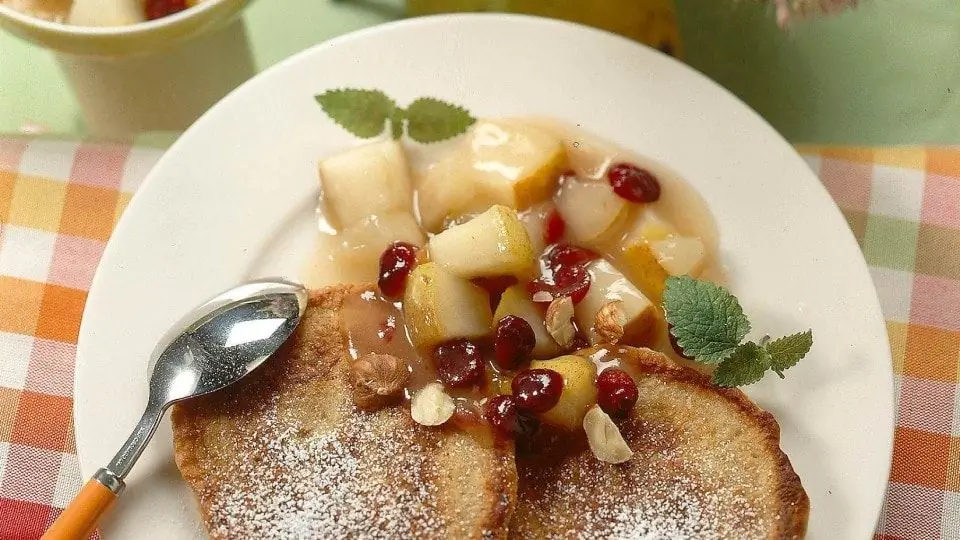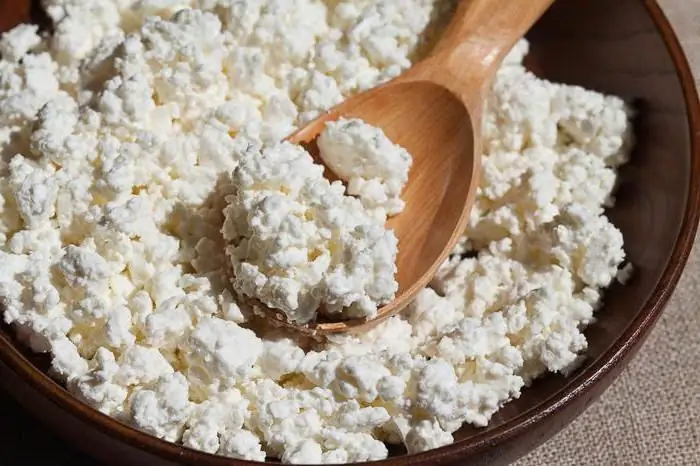2025 Author: Isabella Gilson | [email protected]. Last modified: 2025-01-23 12:50:34
Pecorino is the name of a group of Italian hard cheeses made from sheep's milk. The word comes from the Italian "pecora", which means "sheep" (which, in turn, comes from the Latin pecus - "cattle").

Of the six main varieties of pecorino, each of which has a proven status of origin (PDO) under European Union law, "Pecorino Romano" is probably the best known outside of Italy. This product has been widely used in the international export market since the 19th century. Pecorino cheese is produced on the largest scale on the island of Sardinia, although it is also produced in Lazio and in the Tuscan provinces of Grosseto and Siena. It is worth noting that even ancient Roman authors wrote about this cheese and its manufacturing technology.
The other five mature cheeses on the PDO list are:
- "Pecorino Sardo" - available in two types. Soft ("Dolce") matures in a period of 20 days to 2 months, mature ("Maturo") - over this period.
- "Pecorino Toscano", the production of which was mentioned by Pliny the Elder in his Natural History. It is a soft cheese that is cookedwithin 20 days.
- Sicilian Pecorino ("Siciliano") is available in large heads. This is a hard variety that takes about five months to mature.
- "Pecorino di Figliano".
- "Pecorino Crotonesse".

What Pecorino cheese looks like
All varieties of the product may have a different degree of maturity. Older cheeses, referred to as stagionato, are firmer in texture but have a crumbly texture and distinct buttery flavors and nutty flavors. This product is aged for six months. The other two types, semi-aged and fresco, have a softer texture and a mild creamy or milky taste. Their ripening period does not exceed 20 days.
Exotic Species
In southern Italy, this product is traditionally produced both in its pure natural form and with the addition of black or red chili peppers. This cheese is called "Pecorino Perato" (Pecorino Pepato, literally - "peppered pecorino"). Today, the production of this product allows other additions, such as walnuts or small pieces of black or white truffle. In the Sardinia region, there is a very unusual variety: cheese fly larvae are deliberately introduced into "Pecorino Sardo" to produce a local delicacy called "Casu Marzu".

How is it eaten?
Quality hard Italian pecorino cheese, photowhich are presented in the article, is usually used as an independent product. It is served with pears and walnuts or drizzled with fresh chestnut honey. In addition, this cheese is often used as an ingredient in pasta dishes, sometimes eaten in most Italian regions (from Umbria to Sicily) instead of the more expensive parmesan.
Italian pecorino cheese, with a calorie content of about 419 kcal for every hundred grams of product, has many useful substances in its composition. So, the content of calcium and phosphorus is very high in it, vitamins of groups B, A and E are also present. It is believed that it is very useful for strengthening immunity and maintaining good he alth.
How to tell Pecorino from Parmesan
It's actually easy to confuse these two cheeses that are similar in texture and smell. However, they are still different, so their traditional culinary uses can be very different.

First of all, these cheeses are made from different types of milk. Parmesan is made from cow's milk, while pecorino is made from sheep's milk.
There are textural and flavor differences between the two varieties. Each comes with its own structure and maturity.
- Parmesan is a spicy seasoned cheese with a slightly peppery aftertaste. It is generally available commercially in different stages of maturity, which affects its firmness, but its texture usually remains hard and grainy.
- Pecorino cheese is a spicy, s alty product with a rich"cheesy" taste. As a rule, it is found on sale in a more mature and seasoned form. Pecorino is firmer and denser in texture than Parmesan. However, there is also a soft version. If you buy fresh, young Italian pecorino cheese, you will find that it is lighter in color and has a similar texture to brie. It also tastes less harsh and s alty.
How to use in cooking?
You can successfully take both pecorino and parmesan cheese for cooking various dishes. Both varieties are similar and therefore they can be used interchangeably if you prefer one of them for some reason. Serving both types of product on a cheese plate can also be a good solution. Both types of cheese are great for preparing different compound dishes, so you can safely experiment with substitutions. For example, classic Italian pasta can be cooked with any of them.
Recommended:
Diet cottage cheese pancakes in the oven: recipe and cooking tips. The benefits of cottage cheese, features of choosing a product for cheesecakes

Syrniki are loved by both adults and children. This is a great snack, delicious and he althy breakfast, hearty dinner. But the preparation of such a seemingly simple dish still raises a lot of questions. For every second hostess, they spread, stick or do not turn over. What is the recipe for the perfect cheesecakes? And how to choose cottage cheese?
Which cheese is suitable for soup? How to make cream cheese soup

The recipes of these most delicate dishes occupy one of the leading positions among analogues. Recently, more and more often housewives ask the question on the forums: how to cook soup from processed cheese? According to experts, it is better to use processed cheeses to prepare a delicious cheese soup, since they are more plastic and dissolve well in hot broth, giving the dish an appetizing milky color
Fat-free cottage cheese: calories per 100 grams. Cottage cheese with sour cream: calories per 100 grams. Vareniki with cottage cheese: calories per 100 grams

Cottage cheese refers to fermented milk products, has a low calorie content and is obtained by oxidizing milk, followed by decanting whey. According to the calorie content, it is divided into fat-free cottage cheese (calorie content per 100 g - 70%, fat content up to 1.8%), fat cottage cheese (19 - 23%) and classic (4 - 18%). There are many recipes for dishes with the addition of this product
Chechil (cheese). Smoked cheese "pigtail". Caucasian diet cheese

Tight braids, woven from elastic cheese mass, rightfully lie on store shelves next to other cheeses. Chechil - pickled cheese, the brother of Suluguni, but has its own individual delicate taste
Cheese with casu marzu worms. Cheese with cheese fly larvae

It is believed that the most unusual and strange dishes are prepared only in exotic countries. But it's not. For example, in Italy blue cheese is considered a delicacy. However, compared to other dairy products, it will seem like just flowers. A more disgusting product is cheese with worms. No, he's not corrupted. It is specially prepared and eaten with great pleasure

